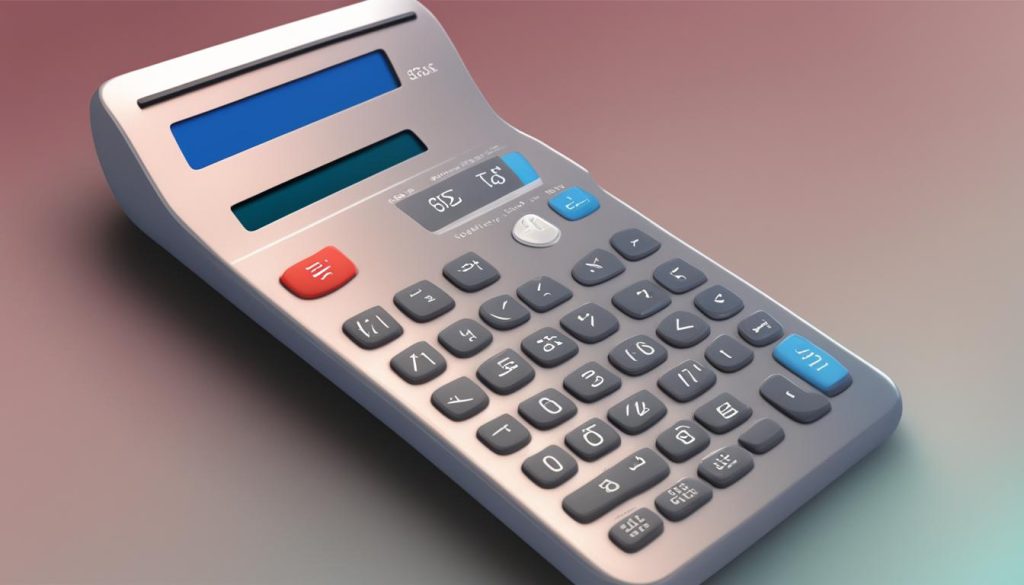Understanding Electricity Standing Charges Explained
Electricity standing charges are a fundamental part of any UK energy bill, yet many consumers remain unsure about their meaning and significance. In this section, we will delve into this topic and clarify what standing charges are, how they are calculated, and their role in determining your electricity tariff.
Key Takeaways
- Electricity standing charges are an essential component of any UK energy bill
- Understanding the role and calculation of standing charges can help you evaluate the fairness of the charges levied by your energy provider
- Standing charges impact your overall energy costs and align with different tariff structures
- By understanding these concepts, you can gain greater control over your energy costs and make informed decisions about your energy provider and tariff choices
What is an Electricity Standing Charge?
An electricity standing charge is a fixed amount that your energy provider charges you for being connected to their network, regardless of how much electricity you use. It is a daily fee that is charged in addition to the cost of the electricity you consume. The standing charge covers the cost of maintaining the energy network and the meters that measure your usage, among other expenses.
Understanding the standing charge meaning is crucial because it can contribute significantly to the cost of your energy bill, even if you use only a small amount of electricity. The amount you pay for your standing charge will depend on your energy provider and the tariff you are on. Some tariffs may have high standing charges but low unit rates, while others have low standing charges and high unit rates resulting in higher energy prices.
The presence of electricity bill standing charge is shown on your energy bill, and it is a separate item from the cost of your electricity usage. It is charged per day, week, or month, depending on your billing terms. Understanding the components of your bill is key to understanding how the standing charge impacts your overall energy costs.
Did you know? It is mandatory for all energy providers to include the standing charge on their tariffs. The standing charge amount has to be clearly displayed on your energy bill so you can easily see how much it costs to maintain your energy connection.
Calculation of the Electricity Standing Charge
Calculating the electricity standing charge is crucial to understanding its impact on your overall energy costs. There are several factors involved in its calculation, including the structure set by your energy provider. The standing charge usually consists of two components:
- Fixed amount: It is the standard daily charge levied by the energy provider to maintain your electricity connection. The fixed amount is charged irrespective of how much electricity you consume.
- Unit rate: It is charged for each unit of electricity you consume on top of your standing charge.
To calculate the standing charge, you first need to identify the daily fixed charge and unit rate charges, as set by your energy provider. Once you have this information, you can calculate your annual electricity standing charge by multiplying the daily fixed charge by 365 and adding it to the annual unit rate charge, multiplied by your annual estimated energy consumption. Simply put, the calculation of the standing charge formula can be represented as:
Daily fixed charge x 365 + Unit rate x Annual estimated energy consumption = Annual Electricity Standing Charge

It’s important to note that each energy provider has their unique way of setting the standing charge, and it can vary depending on energy plan, energy consumption, or geographic location. Knowing how your energy provider calculates the standing charge is vital in evaluating the fairness of the standing charges levied by them.
The Role of Electricity Standing Charges in Tariffs
Electricity standing charges play an essential role in determining energy tariffs in the UK. Tariffs are the rates charged for the consumption of energy, and they vary depending on the type of energy tariff and energy provider.
The most common type of tariff in the UK is the standard variable tariff (SVT). These tariffs change with time and usually have higher rates as compared to other tariffs. Electricity standing charges are a component of the SVT and comprise a fixed charge applied daily or monthly.
The standing charge is added to the energy charge, which varies depending on the amount of energy consumed. Therefore, even if no energy is used, the standing charge still appears on the bill. The combined charges make up the total energy cost of the household or the business.
It is important to note that energy providers determine the UK standing charge for each tariff. The fixed charge varies depending on the region, energy provider, and type of tariff. Therefore, careful consideration of different tariff types is necessary to make an informed decision about selecting an energy provider and tariff that suits your energy consumption needs.

Conclusion
In conclusion, an understanding of electricity standing charges is an essential aspect of managing energy costs. By comprehending the purpose and calculation of standing charges, consumers can effectively compare tariffs and energy providers. This knowledge enables customers to make informed decisions regarding their energy usage and provider selection.
Moreover, with numerous energy tariffs available in the UK, customers must consider standing charges when evaluating their options. Understanding the role of standing charges in different tariffs and energy plans provides customers with the knowledge to choose the most cost-effective option.
In summary, electricity standing charges are a key aspect of energy bills and tariffs, and an understanding of this concept is fundamental to managing energy expenses. Consumers must assess their energy provider’s standing charges and tariff structures to make informed choices and manage their energy costs effectively.
FAQ
What is an electricity standing charge?
An electricity standing charge is a fixed daily fee that is charged by your energy provider, regardless of how much electricity you consume. It covers the costs associated with maintaining and providing the electricity supply to your property.
How is the electricity standing charge calculated?
The calculation of the electricity standing charge varies between energy providers. Typically, it is based on factors such as your energy usage profile, the local distribution network costs, and the administrative expenses involved. You can find the specific details regarding the calculation method in your energy provider’s tariff terms and conditions.
What is the role of the electricity standing charge in determining energy tariffs?
The electricity standing charge is one of the components that contribute to your overall energy tariff. It helps energy providers cover the fixed costs associated with providing and maintaining the electricity supply. Along with the standing charge, energy tariffs may also include a unit rate for the actual electricity consumed, which varies based on your usage.
Does every energy provider apply a standing charge?
Not every energy provider applies a standing charge. Some providers may offer tariff options without a standing charge. However, it is important to consider that even without a standing charge, energy providers usually include the cost of supplying electricity within their unit rate, resulting in higher per-unit costs for electricity consumed.
Can I switch to a tariff with a lower standing charge?
Yes, you can switch to a different energy tariff with a lower standing charge if it is offered by your energy provider or by other providers in the market. It is advisable to compare the overall costs, including both the standing charge and unit rate, when considering a tariff switch to ensure you are making a cost-effective decision.




